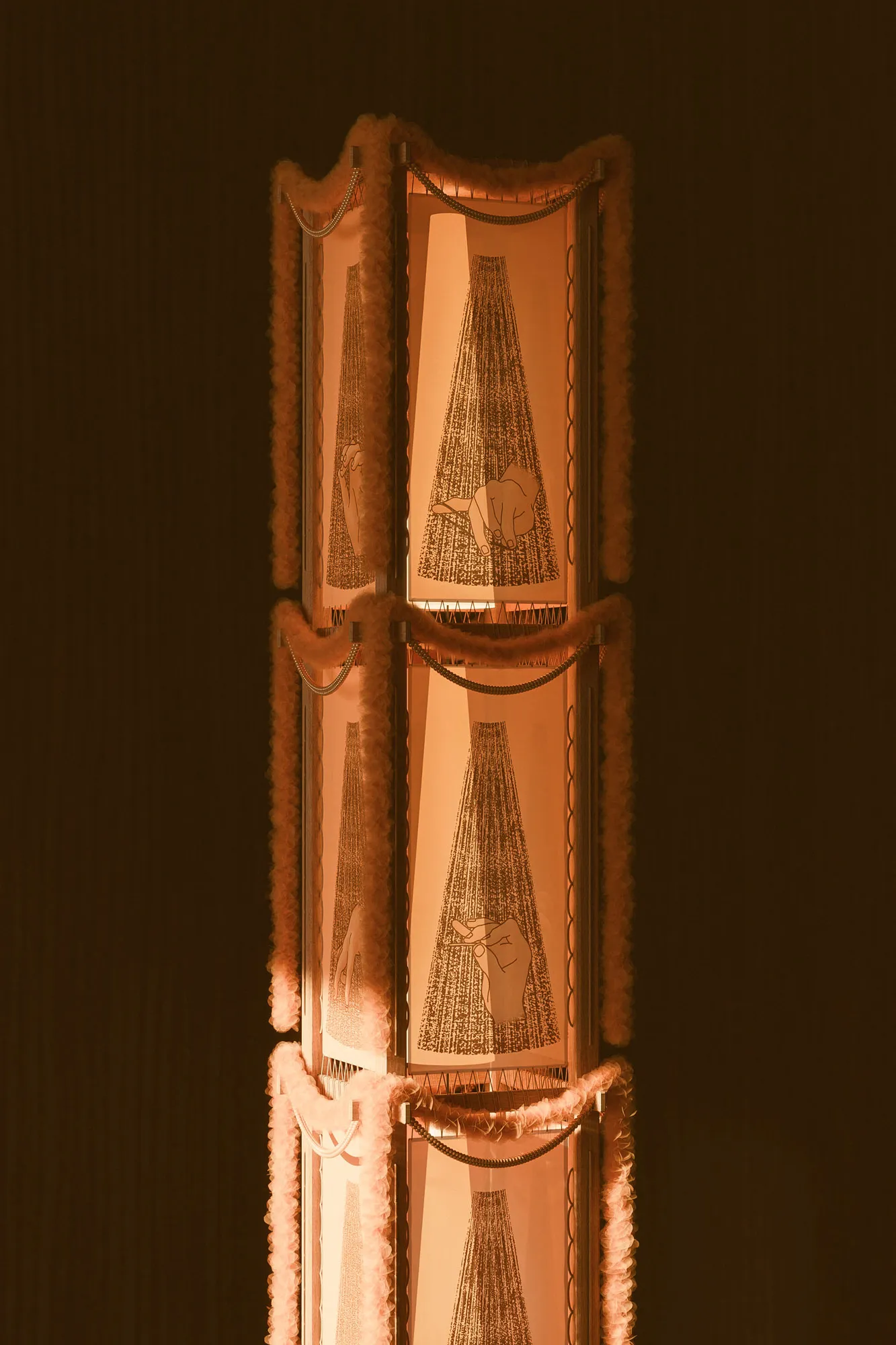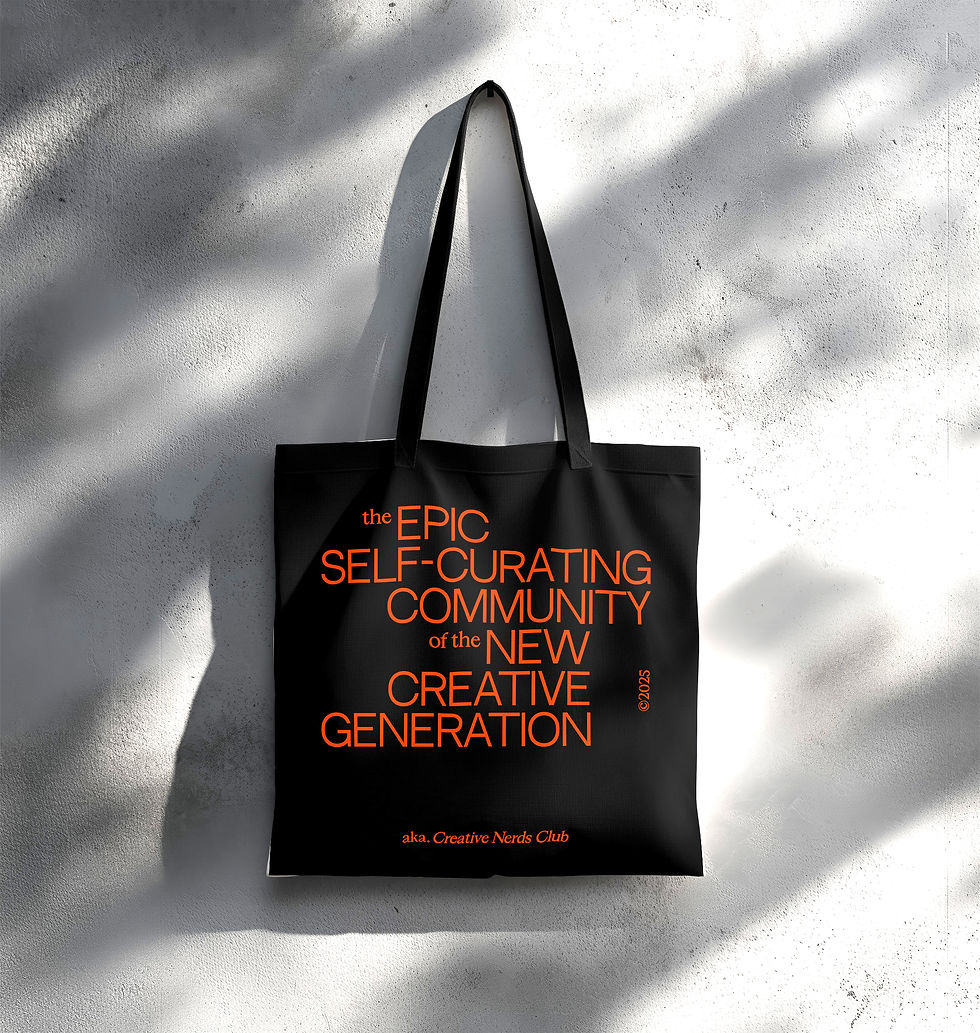Duyi Han | Artist & Designer
- Onur Çoban

- May 23
- 5 min read

Bringing art and design together on a shared ground of aesthetic research, Duyi Han creates interdisciplinary works ranging from collectible objects to digital installations. With a background in architecture, Han approaches beauty through algorithmic compositions, treating his works as neuroaesthetic “prescriptions.” Drawing on references from Taoist philosophy to visual culture, he aims to touch contemporary belief systems and human emotions.
We spoke with Duyi about his aesthetic approach, his relationship with evolving forms, and his perspective on contemporary visual culture.
Interview: Onur Çoban
Who is Duyi Han? Can you briefly tell us about yourself?
I am a Chinese artist and designer. I create collectible design, scenography, and digital art as what I call “neuroaesthetic prescriptions.” I grew up in Shanghai, always wanted to be an architect, and went to the US to study architecture. I spent five years at Cornell University in New York and Rome and also worked at Herzog & de Meuron in Switzerland before I graduated. All this education and training in architectural design inspired me to develop my own design philosophy. I shifted away from architecture itself and explored some sort of creative direction in expanded disciplines. It was a fantastic decision… I made digital set design for gallery shows, developed interior spaces as fine art, and created furniture collections and even fashion. In 2022 I was cold-emailed by Alcova to exhibit at Milan Design Week. That was about my very first collection, Ordinance of the Subconscious Treatment, and a lot of things have happened since then…
Visions of Bloom
“To understand my design philosophy you may have to delete your previous conceptions of design. Because the way I design is never about what something is, but how it is felt and perceived in the human brain. So the conventional knowledge about materiality, color, geometry kinda doesn’t matter to me.”
How would you describe your design philosophy?
It is all about the intangible. It is more about the emotional function than the physical function. I analyze the psychological process when someone visually encounters a piece of art or design. My work is the visual projection of complex emotions. Hard and soft materials make you feel differently and this feeling also varies depending on time. On a large time span, zeitgeist, or the spirit of times, is a profound emotion. Zeitgeist always changes. Styles change and sometimes come back in cycles. I harvest the driving forces of art history, the energy of change, and apply different tendencies to different projects. So my design philosophy is formless. It incarnates into visual form only when it becomes specific in a certain context.
Last year when I was introduced to an art collector, I first showed him the thesis project I did at Cornell, which is a collection of simple, white models of different forms. Later he saw my silk-embroidered furniture in an exhibition and asked why the two projects looked so different. I said, the white models were about the design philosophy itself, and then these white embryoes grew into the elaborated pieces. It was about adding content, meaning, metamorphosis.
What factors do you consider when researching materials or choosing materials for your new projects? Can you tell us a little bit about the material choices in your work?
Between concept and final design is a process of curating visual content and stimuli. This process is very delicate and complex, and very conceptually rigorous. It’s like a lot of visual resources are floating in my head and I have to decide which ones to use.
My furniture work usually has a lot of fabric and creative sewing, because in the current era, fashion is such a major driving force of visual culture. It is associated with our zeitgest and so many emotions, desires, and memories. The tenderness and femininity embodied in textile, is something the world needs. Through fashion, cultures and civilizations find their means of visual communication. My Oxytocin cabinet is covered in silk inside-out, even the inside surfaces of the drawers’ voids. Then on top of this, much content curation about the use of embroidery, the semiotic meaning of the embroidery, the appearance of Chinese religious and folk objects that the pieces evoke, and many more layers.
Ordinance of the Subconscious Treatment
But then, sometimes I deliberately choose to not use textile. In the set design I did for the Collectible Fair in Brussels earlier this year, I wanted to do an environment that felt real, fresh, and grounded, as the curatorial theme was about the virtual vs. the reality. Textile would not be the best solution, and it had been already used heavily in set design and would not feel fresh at that moment. The visual design of my floor painting involved the blending of the colors of the exhibited pieces themselves. I also mixed the impressions of various artworks such as Ancient Roman murals, Mughal paintings, contemporary paintings like Michaël Borremans, and Brussels’ own Art Nouveau decor which I felt together would evoke the right emotional response. There was a careful consideration of what would suit the cultural sensibility in Brussels and in Belgium (I would have done it differently if it was in Milan). I painted the floor completely by hand, on a layer of hand-painted plaster, that had the right degree of attractiveness of something tactile and grounded.
Can you tell us a bit about the design and production process in your work? Are you closer to analogue or digital techniques?
Over time I have developed this work method that adopts the processes of architectural visualization and graphic design. I do almost everything in 3D rendering before a one-time physical execution. I grew up using things like SketchUp and Google Earth so I’m more native to digital tools than physical models, although I’m also good at it. If I can finish the design just digitally, I would prefer not to touch a physical tool. I developed the Brussels mural fully digitally with the exact placement of each exhibited piece before I printed out the floor plan and did the painting. In my recent solo exhibition “Visions of Bloom” in Shanghai which combines art and architecture history with cutting-edge bioscience research, I developed the entire space digitally to each pixel of detail. I tested hundreds of renderings. My curator says that the final physical result achieved 98.99% if not 99% of the rendered intention. Because I designed the lighting that involved lots of saturated yellow lights, I pre-adjusted the colors of the wallpaper to be wrong, so when the yellow lights hit the printed wallpaper in physical reality, the color became right. And of course some of my works are digital art only. No problems with becoming physical.
Lady Dior
"The design process tends to be often painful, but seeing the final product is really satisfying. I enjoy the almost surreal feeling of walking in my physical space that feels like walking in my rendering but “hyper-realistic.” It’s hilarious to see people not being able to tell photographs from renderings and vice versa."
Can you tell us a little about the sources of inspiration behind your work? Who are the names you follow with curiosity in this field or in different disciplines?
I think I’m like a tourist and art historian and I look at places and things of aesthetic and cultural interest. I observe examples of how cultures and civilizations communicate themselves visually, from airport signage to sneaker designs. Watching content on YouTube is also a form of traveling and researching. Among the things I watch is scientific discovery. The theories of particles in the universe and quantum theory and Universality remind us that it is rewarding to see our world not as an aggregation of rigid and solid mass but as intersecting waves and interconnected relations.
Are you excited for the future? What are your plans?
I feel excited because there is both certainty and uncertainty. It’s like having a forecast of the weather or the stock market. I have a few upcoming little exhibitions in the rest of this year and I’m hoping to embark on larger and more exciting projects. Projects that really make meaningful and valuable progress in visual culture.
















































































